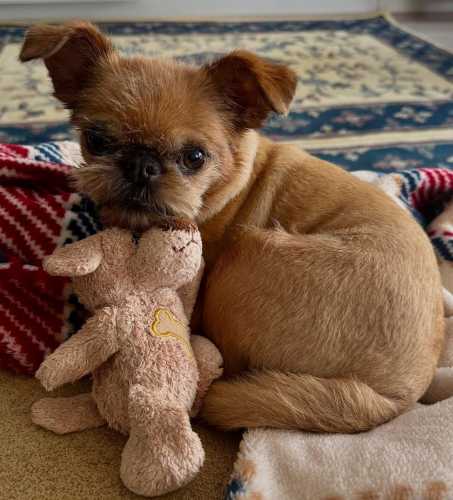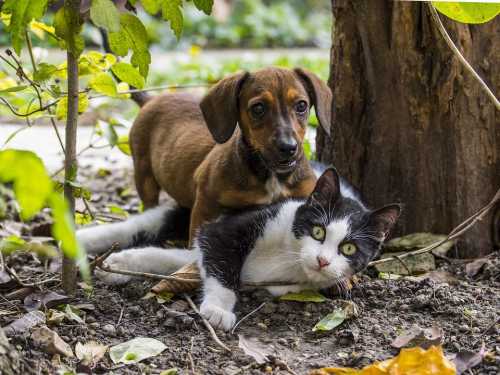
As a result, the pet turns into either a fashionable attribute or a harsh aggressor. Let's debunk misconceptions together, shall we?
Chew, chew
They say that sales of chew toys have been falling lately. Why? Someone who is not professional enough simply said that they provoke spontaneous aggression in dogs and a desire to chew everything. Not true! The chewing reflex helps four-legged friends cope with a lack of physical activity and improve the condition of their teeth. There is no need to talk about puppies. Every dog should have a “rodent”. That's when damage to furniture will tend to zero.
Don't wake up the beast in me!
The dog is sleeping, whining and twitching its paws. It is urgent to wake it up! But who reported this? Why wake it up? Such behavior indicates that the dog has entered a deep phase of sleep, and its movements are a response to experiences. Not always whining is a “nightmare”. It's just that the body's memory betrays its knowledge. If you were woken up in the midst of a journey in the kingdom of Morpheus, would you be satisfied? For a dog, such an act can turn into stress. And stress, as you know, spoils the mood.
Don't offend the ladies!
There is an opinion that a dog never attacks a… “lady”. But there is an important clarification. Most likely, he will not start a fight first. Feuds among dogs are as normal as cabbage in borscht. They constantly prove their dominance, and this does not surprise anyone. But if the “lady” has a fierce character by nature, she can easily provoke a dog into a fight. And if she also has offspring… “Watch out, man!”
The key to health?
A dog's immunity depends on many factors: conditions of detention, external circumstances, timeliness of care, breed. And, of course, on the “origin”. They say that “mongrels” are much healthier than purebred dogs. There is some truth in this, but the statement is still subjective. Both a Tibetan mastiff and a good-natured Umka from a neighboring yard can get sick with the same disease. The immune system works individually. And it is formed, by the way, too!
Grind provisions
Many people associate dogs with active bone-eating. How many owners are then surprised by health problems? By the way, it is difficult to trace the pattern: I ate a bone a couple of days ago, and the illness manifested itself this morning. Any veterinarian, dog trainer and zoologist will say that human friends should not be treated to tubular bones! The reason for this banality is simple – sharp edges.
Be healthy!
In the human world, a “sneeze” is usually perceived as a sign of illness. And here anthropomorphism can play a trick on us: the owner has already stuffed the puppy with vitamins, made an appointment with the vet and started Googling dangerous diagnoses. Meanwhile, the baby looks on in surprise: “I just sneezed!”.
Yes, dogs don't speak words, but their sneezing is also a signal. And it doesn't always mean illness or anxiety. Dust in the nose, an occasional blade of grass, or a sharp smell can cause a perfectly healthy sneeze. There is even a “playful sneeze”: when a dog sneezes while running or playing, expressing emotions and excitement.
In addition, there are breed nuances: short-faced dogs are more likely to exhibit the so-called “reverse sneezing” – a strange sound that scares owners, but in reality is rarely dangerous.
So, sneezing at a dog is more of a meaningful gesture than a sentence. Sometimes it does signal a problem, but much more often it's just a way to clear your nose or show emotion.
Cut on the nose
Owners immediately start to panic as soon as they discover that their four-legged friend has a dry nose. This myth has grown a gray beard, but people do not stop believing in it. Yes, a dog's nose can “dry out” due to illness. If your pet looks weak and behaves unusually – go to the vet! But a dry nose can also be caused by overheating, slow metabolism, fatigue, hormonal surges, fear… A thousand and one reasons provoke dryness.
Pet the dog
If a dog is afraid, its behavior is difficult to confuse with anything else: it may tremble, wag its tail, lick itself, and look for a hiding place. And then most owners do what seems most natural: pet it and say something soothing in a quiet voice. Hence the strange myth that caressing it during fear only “reinforces” the fear.
In fact, fear is not a learned behavior, but an emotion, and it is impossible to “encourage” it. The presence and support of a person can be an important safety signal for a dog. But there are nuances here. Excessive fuss, hugs that constrain movements, or the owner's anxious voice can only increase panic. But a calm, confident tone and a soft touch will really help your four-legged friend relax.
There's one catch: If your dog is afraid of a specific trigger—a thunderstorm, fireworks, or the neighbor's bulldog—simply petting him isn't enough. Sometimes it takes a safe space, distraction, or even gradual training to change his attitude toward the source of his fear.
And, of course, it's worth considering behavior: if the animal is not just scared, but reacts aggressively, trying to defend itself, invading its space with “caresses” is dangerous. In such cases, it's better to let it breathe from the side and ensure a controlled distance.
So, you can and should reassure — but do it wisely, calmly, and in the right context. Then trust will truly grow, and the dog will learn to see you as a support even in moments of fear.





